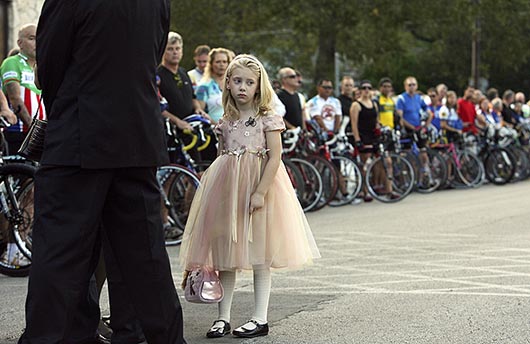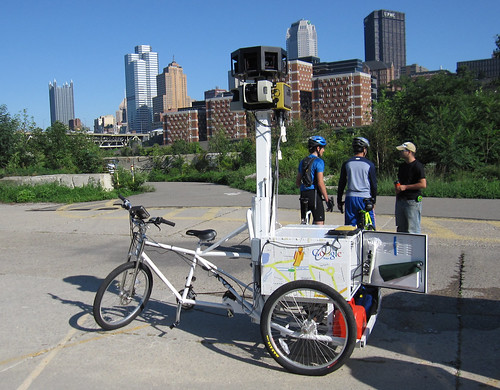I read Outside magazine and thought this article has useful content, albeit there is more product/gear advertisement than I would prefer.
Excuse #5:It hurts when I ride
The Truth: That's easily fixed, but your bike might not fit you. Here are the five keys to a plush ride, according to le grand French constructeurs of old.
FIT: To eliminate back, neck, and wrist pain, your saddle should be close to even with your bars. And if the distance between the two doesn't feel right (meaning you're neither scrunched up nor overstretched), nothing will.
MATERIAL: Lightweight chromoly steel is springy (absorbs shocks), strong (is very hard to bend or crack and, unlike carbon, will never break), durable (will most likely outlive you), and practical (is easily repaired).
SADDLE: Leather takes on the shape of your derriere for years of untroubled riding. We love two models with anatomical cutouts, the Brooks B17 Imperial ($142; brooksengland.com) and the Selle An-Atomica Titanico LD Watershed ($180). The Titanico is softer out of the box but will reach the end of its life sooner. Not into leather? Top pick: the WTB SST ($60–$140; wtb.com), a padded shell with a cradling shape.
BARS: Make sure your wrists aren't bent awkwardly. Drop bars offer several hand positions. The Nitto Noodle ($54– $65; rivbike.com) is a favorite.
TIRES: Bigger equals superior comfort, traction, stability, and versatility. You don't want to go any lower than 28mm in diameter, and 32 to 40mm is more like it. And don't pump them to capacity; try 75 percent of max to start, and then experiment.
Excuse #6: Comfort Level
The Truth: Here it is, straight from GRANT PETERSEN, of Rivendell Bicycle Works. Because who better than the godfather of modern utility cycling to help you stop making excuses and get off the gas?
Chain-smoking salarymen in Tokyo, ladies in Amsterdam, and oldsters in Oxford grab a bike when they want to go somewhere. But they don't necessarily ride for health or to be good stewards of the planet. In Japan, the car is the slow, high-hassle, expensive way to move. Europe's urban centers predate the car and tend to have short, bike-friendly commutes. Bicycling is the path of least resistance in these cases, so it's easy to be virtuous. But in America, it's so easy to be bad. You almost need superpowers to be good. Rah-rah rants about the joys of pedaling, the health benefits, and the wide selection of commute-worthy bikes are all but powerless within a pro-car infrastructure. If they worked, we'd be right up there with the best bike-commuting countries, where 40 to 70 percent ride daily. Our score: 0.48 percent. Our problem is partly a lack of government-imposed disincentives—like the much higher fees and operating costs associated with owning a car in many other countries—but there's also our genetic proclivity to conserve energy whenever possible, like a little Lucifer on your shoulder constantly jingling the car keys. Since it's unnatural, even masochistic, to impose your own disincentives, find another way to break the car habit and get the bike habit. Breaking habits is hard but not impossible, and you have to give a new routine time to take root. The first step is making it easy, and one way is to get a suitable bike. Start when the weather is best, because it's not easy for bike commuting to take root in the hot, muggy summer or dark, cold, wet winter, when it's so hard to resist the comfort of a temperature-controlled sedan, listening to your favorite tunes and sipping coffee. But in time you may come to love riding through all four seasons. Nasty streets and sleet? Bring it on! Whatever you do, just make it so you're driving less and pedaling more. The more you do it, the easier it gets. And if all those far-flung folks can do it, so can you. You may have a harder system to fight, but it's a good fight.
Bike Commuting 101: Lock This Way

RELAXED? Kryptonite Evolution Mini ($62; kryptonite.com)
NERVOUS? Kryptonite New York Fahgettaboudit ($100) and, for your saddle and front wheel, KryptoFlex 1007 Looped Cable 7' ($12)
Street Safety 101

1. NO BIKE LANE?
Take the rightmost third of the lane.
Own it, and, please, be very predictable.
Ignore impatient honkers; don't engage hostile ones.
2. IN THE BIKE LANE
Watch out for car doors and pedestrians.
Never swerve into traffic; brake hard, in-line.
Pass cyclists carefully with "On your left!"
3. AT INTERSECTIONS
Never assume a car won't hit you while it's turning.
Take the lane after a visual check and hand signal.
Move slowly to the right once you're through.










